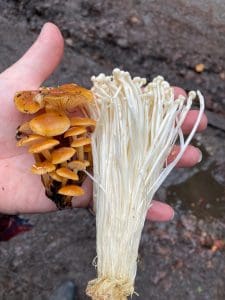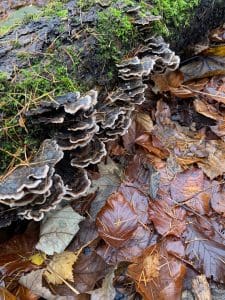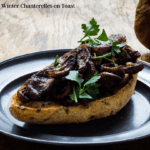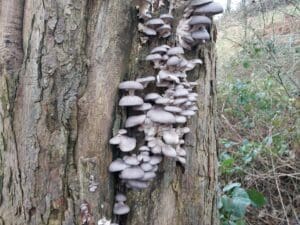We’re all getting ready for the Christmas festivities but there’s still some space to get out foraging in December. This month also features the Winter Solstice which celebrates the shortest day and the longest night of the year. There may be less to forage but there are a few species that prefer these colder temperatures.
So what can you forage in December? Here are our top five picks for the month.
Turkey tail
A mushroom that can be found most of the year, they start growing in Autumn so by December they’re at their largest and best. They have quite a tough, leathery texture so they are typically not eaten as such, use them to make flavoursome and nutritious stocks and teas. They contain many compounds that boost your immune system.

Click here for the ID guide for Turkey Tail.
Velvet shank
A lovely edible mushroom that thrives in the cold weather, they are common on decaying hardwoods throughout winter. They are cultivated in Japan and are known as the Enoki, due to growing conditions these look quite different than their wild counterparts.
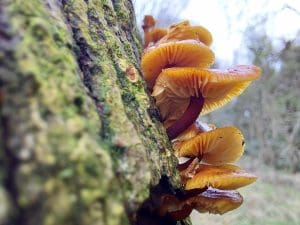
Click here for the ID guide for Velvet Shank.
Wood avens
Winter is a good time for collecting edible roots, (as long as the ground isn’t frozen solid) The roots of wood avens contain the same chemical that is found in cloves and the plant is often known by the name Clove root. I use them to make a syrup that I add to mince pies, apple crumbles and cakes.

Click here for the ID guide for Wood Avens
Garlic Mustard
Garlic mustard or Jack-by-the-hedge is a plant that survives even the toughest winter. As the name suggests it tastes somewhere between garlic and mustard and works really well in winter salads. It can also be wilted and used as a leafy green.

Click here for the ID guide for Garlic Mustard.
Pine Needles
Pine needles can be collected at any time of the year but while I’m out collecting foliage for Christmas wreaths and displays I grab a few handfuls for their medicinal qualities. They are very high in vitamin C and are good for fighting infections, coughs and sore throats as well as combating fatigue. Just leave a small handful in boiling water for 5 minutes and drink it as a tea.

Click here for the ID guide for Pine.
Recipe of the month – Wild mushroom and sage soup

When it comes to cooking in winter I want quick, comforting and hearty dishes and this one ticks all of those boxes. You can use any mushrooms that you have available. I often heat this up in the morning and pop in a flask for me to enjoy when I find a good spot to sit whilst out on a day of mushroom hunting.
Ingredients:
Serves 6 starters potions
- 180g chopped leeks, cleaned thoroughly and chopped roughly
- 2 large carrot peeled and roughly chopped
- 1 whole celery cleaned and roughly chopped
- 2 large white onions finely chopped
- 1/2 bulb garlic finely chopped
- 200g peeled and roughly chopped white potatoes
- 750g fresh wild mushrooms (whatever you’ve found that day)
- 7 tbsp cooking oil
- 3g dried thyme
- 240ml dry white wine
- 200ml single cream (or plant based alternative)
- 400ml water (veg stock if you have)
- 150g butter or plant based alternative
- Seasoning
To Serve:
- 30g fresh sage
- 30g fresh parsley
- A splash of balsamic vinegar
Click here for more Winter recipes.
What to forage in November.
Traditionally November marked the end of the harvest season and the beginning of winter, but there’s still space to head out foraging in November. It’s really the foragers last chance to collect and preserve ingredients to last throughout the winter. In some parts of the country snow will already have fallen and it’s dark by 4pm but there’s still plenty of edibles to find.

What to forage in January.
Christmas is over, you’ve already broken your new year’s resolution and the weather’s foul but believe it or not there’s still plenty to be foraging in January. Make the most of those brief breaks in the rain and burn off some of that Christmas dinner.



